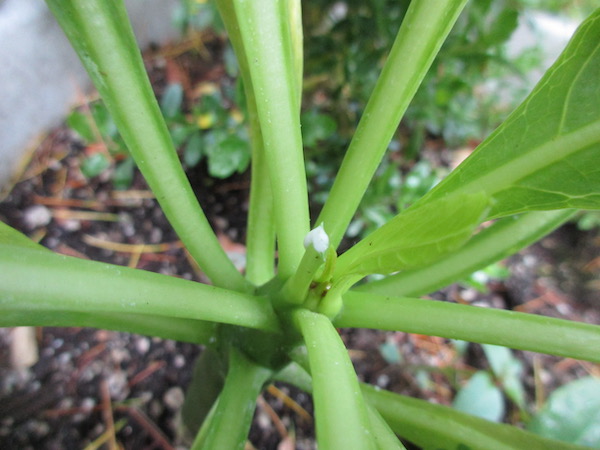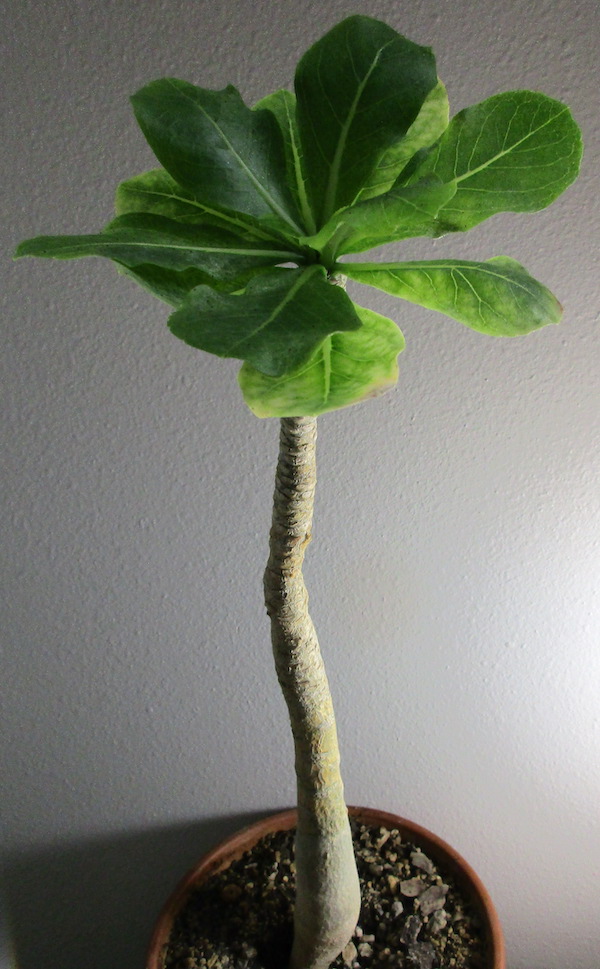Plant of the Month: January 2022
|
| Cabbage on a Stick |
| Brighamia insignis A. Gray |
CAMPANULACEÆ; Bellflower Family
|
| A native Hawaiian succulent treelet, striking in appearance, tempted me to try it as a houseplant. First I bought one mail-order in August 2017; it died in early 2019, so I bought a second, that is still alive. But it is growing slowly, spider-mite prone, and not "paying the rent." So it will go bye-bye to make room for new plants. In my experience, if a potted houseplant could sing the blues, Brighamia would complain, "I miss my homeland, I miss it so!" |
| The plant once was distributed more widely, but these days is confined to windward sides of high sea cliffs of Kaua'i, and is endangered. In the wild, it used to grow to 18 feet tall, its trunk topped with light green, thick, shiny leaves to 12 inches long. Its lovely, violet-scented flowers are trumpet-shaped, cream to yellow, fragrant, and moth-pollinated --but its moth pollinator is extinct. The plant has various vernacular names: Cabbage-on-a-Baseball-Bat. Cabbage Tree. Hawaiian Palm. Vulcan Palm. Olulu. Alula. Pu Aupaka. In 1868, the species was named after William Tufts Brigham (1841 - 1926). These days, far more specimens are grown cultivation than remain in the wild; it proves short-lived usually. |
| Its leaf color, texture and mild flavor suggest loose-leaf cabbage well, but there is a slightly acrid white sap that makes raw ingestion unpleasant; boiling the leaves 2 minutes obviates the flaw. |
| The genus Brighamia has one other species, B. Rockii H. St. John. A well known genus related closely is Lobelia. |
My photos show what a flop Brighamia has been for me. To see big, healthy plants, just conduct an image search to see hundreds easily. I regret that my growing conditions have not been to the plant's liking.
Back |

My first Brighamia insignis in August 2017 ; photo by ALJ
|

White sap of Brighamia insignis ; photo by ALJ
|

Cooked Brighamia insignis leaves ; photo by ALJ
|

My Brighamia insignis Oct. 29 2018, before dying ; photo by ALJ
|

My 16 inch tall Brighamia insignis with leaves at most 3 inches long, January 2022 ; photo by ALJ
|
|
|

